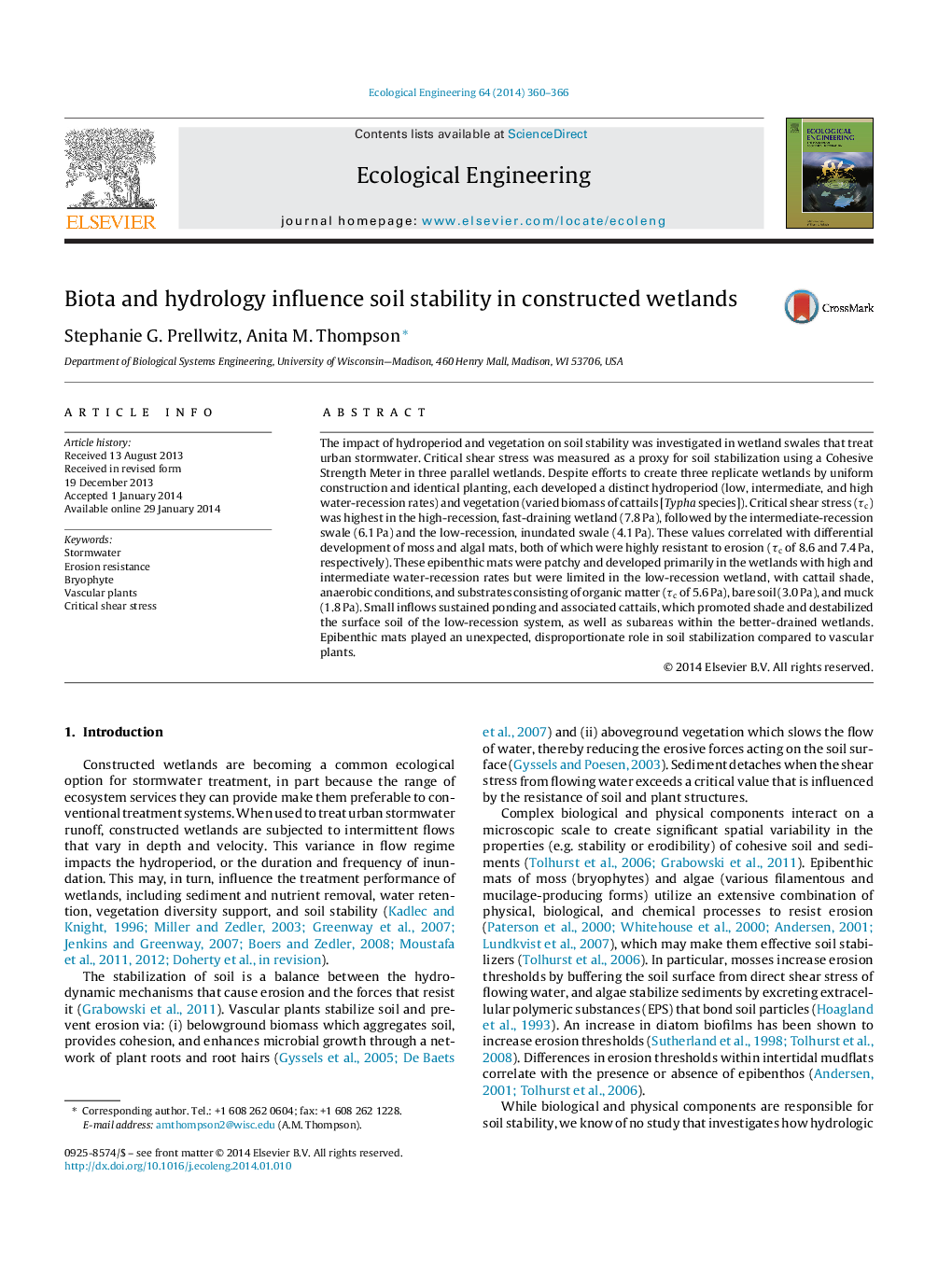| Article ID | Journal | Published Year | Pages | File Type |
|---|---|---|---|---|
| 4389599 | Ecological Engineering | 2014 | 7 Pages |
•Critical shear stress was measured as a proxy for soil stability in three wetlands.•Patchy substrates included algal and moss mats, organic matter, bare soil and muck.•Fluctuating wet/dry periods promoted highly-erosion resistant moss and algal mats.•Nearly-continuous ponding contributed to highly-erodible organic matter and muck.•Results support need to better understand the role of biota in the erosion process.
The impact of hydroperiod and vegetation on soil stability was investigated in wetland swales that treat urban stormwater. Critical shear stress was measured as a proxy for soil stabilization using a Cohesive Strength Meter in three parallel wetlands. Despite efforts to create three replicate wetlands by uniform construction and identical planting, each developed a distinct hydroperiod (low, intermediate, and high water-recession rates) and vegetation (varied biomass of cattails [Typha species]). Critical shear stress (τc) was highest in the high-recession, fast-draining wetland (7.8 Pa), followed by the intermediate-recession swale (6.1 Pa) and the low-recession, inundated swale (4.1 Pa). These values correlated with differential development of moss and algal mats, both of which were highly resistant to erosion (τc of 8.6 and 7.4 Pa, respectively). These epibenthic mats were patchy and developed primarily in the wetlands with high and intermediate water-recession rates but were limited in the low-recession wetland, with cattail shade, anaerobic conditions, and substrates consisting of organic matter (τc of 5.6 Pa), bare soil (3.0 Pa), and muck (1.8 Pa). Small inflows sustained ponding and associated cattails, which promoted shade and destabilized the surface soil of the low-recession system, as well as subareas within the better-drained wetlands. Epibenthic mats played an unexpected, disproportionate role in soil stabilization compared to vascular plants.
